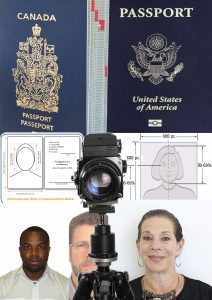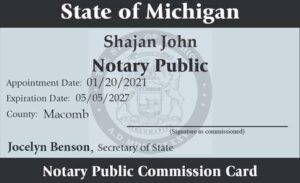Factors of Poor
- Dry fingers due to the natural aging process.
- Worn ridge structure due to occupation.
- Finer ridge structure specific to a demographic group.
- Uncooperative subject.
- Nervous Subject.
- Humidity / Temperature.
- Seasonal Change.
- Ambient Light.
- High Throughput/ Reduced Capture Time.
- Unclean Scanner Platen.
- Application Graphical User Interface (GUI).
- Ease of Scanner Use / Interaction.
How to Submit a Legible Fingerprint
- Minimize hand-washing to avoid worn ridges.
- Applying lotion at night and wearing gloves to bed.
- Use Digital Fingerprint technology (Live Scan) for Paper-Ink and Roll Card rather than Old Ink Style (Both are Ink Printing).
- Take a Break in between the attempt and Rubbing Fingers.
Quality Fingerprints
Female subjects have worse image quality, so before submitting fingerprints please practice the above tips. The left-hand fingerprint quality is worse than the right-hand Image. Quality worsens as the subject’s age increases. Approximately 2% of the Applicants will be rejected due to poor fingerprint image quality. We are always trying our best to reach 75% above fingerprint quality rating even if it needed 30%. Royal printing is not at all responsible for the rejection due to poor fingerprint quality, missed agency attestation and or authorization with signature, filled out the application form, and or incorrect data entry. Before you leave our office or submit Fingerprint Card, your responsibility is to double-check all of your papers work. Royal Printing, we identify you and authorize your card with our official signature. You are responsible for getting our official signature, certification, cover letter, stamp, and sealed envelope from us. We provide an official envelope to all of our customers FREE of charge. We are also providing USPS Priority mail services with Tracking Number. All the transactions are final and NO REFUND. Assuring 100 % satisfaction and we are recommending that you apply ample lotion to your hands throughout the day for at least one week prior to returning to our location for the re-submission.
How fingerprints are formed and why it is unique to an individual
A person’s fingerprints are formed when they are a tiny developing baby in their mother’s womb. Fingerprints are the tiny ridges, whorls, and valley patterns on the tip of each finger. Fingerprints forms from pressure on a baby’s tiny, developing fingers in the womb. No two people have been found to have the same fingerprints, they are totally unique. There’s a one in 64 billion chance that your fingerprint will match up exactly with someone else’s. Fingerprints are even more unique than DNA, the genetic material in each of our cells. Although identical twins can share the same DNA or at least most of it, they can’t have the same fingerprints.
How Fingerprints related to Criminal Investigations
Fingerprint identification is one of the most important criminal investigation tools. A fingerprint in its narrow sense is an impression left by the friction ridges of a human finger. Human fingerprints are detailed, nearly unique, and difficult to alter. The digital fingerprinting system reduces error rates and provides instant feedback.
Missing or Deformed Fingers
If the finger is missing or deformed, every attempt should be made to record the fingerprint impression blocks. If unable to record the image, simply place a notation in the fingerprint block. Missing fingers are fingers physically present but cannot be recorded at the time of capture due to injury.
Amputated fingers
If a portion of the first joint is present, record the available fingerprint pattern area in both the rolled and plain impression blocks.
Extra fingers
When fingerprinting an individual with an extra finger, record only the thumb and the next four fingers. Do not record the extra finger as either a rolled or plain impression.
Scarred fingers
Record scarred fingers in both the rolled and plain impressions without a notation.
Worn fingerprints
An individual, by the nature of their work or age, may have very thin or worn ridges in the pattern area. Record worn fingers in both the rolled and plain impressions without a notation.
Related Services:
 Instant Passport Photos 2 x 2 & World Wide Photos: Ready to go 10 Minute USA / CANADA Printed (1-2) Or Digital Copy $20 additional copy (1-2) $10. We are using a global-wide photo template to cover all the nations, it meets the official requirements of the nations. Our professional photos can be useful for the Visa (Temporary / Resident), E-Visa, PIO, Passport, Citizenship, Permanent Resident, Green card, PCC / Birth Certificate, FRRO, Driving License, ID Card, Taxi License, and much more. Please let us know your country name and requirements, you will get the photographs at your fingertips within no time.
Instant Passport Photos 2 x 2 & World Wide Photos: Ready to go 10 Minute USA / CANADA Printed (1-2) Or Digital Copy $20 additional copy (1-2) $10. We are using a global-wide photo template to cover all the nations, it meets the official requirements of the nations. Our professional photos can be useful for the Visa (Temporary / Resident), E-Visa, PIO, Passport, Citizenship, Permanent Resident, Green card, PCC / Birth Certificate, FRRO, Driving License, ID Card, Taxi License, and much more. Please let us know your country name and requirements, you will get the photographs at your fingertips within no time.

 Michigan’s Law on Notarial Acts (MiLONA), P.A. 238 of 2003, as amended, is an act to provide for the qualification, appointment, and regulation of Notary Publics (Notaries) by the Secretary of State. As such, a Notary is a public servant. The MiLONA prescribes the powers and duties of state agencies and local officers and provides for remedies and penalties. The MiLONA provides for the protection of citizens against fraud by requiring that a commissioned Notary verify and attest to the signing of documents. The MiLONA further provides for the admissibility of evidence and establishes the recognition of acknowledgments and other notarial acts performed outside of this state.
Michigan’s Law on Notarial Acts (MiLONA), P.A. 238 of 2003, as amended, is an act to provide for the qualification, appointment, and regulation of Notary Publics (Notaries) by the Secretary of State. As such, a Notary is a public servant. The MiLONA prescribes the powers and duties of state agencies and local officers and provides for remedies and penalties. The MiLONA provides for the protection of citizens against fraud by requiring that a commissioned Notary verify and attest to the signing of documents. The MiLONA further provides for the admissibility of evidence and establishes the recognition of acknowledgments and other notarial acts performed outside of this state.
Notary Commission
A Notary Public commission is a statewide appointment. Although commissioned in a specific county, once commissioned, a Notary may notarize anywhere within the State of Michigan. Notaries copy must be included:
- Notary Public: State of Michigan
- Notary Name: Exactly as commissioned
- Date of Notarization:
- County of Commission:
- Commission Expiration Date:
- Acting in the County of _______. (Included when performing a notarial act outside of the Notary’s county of commission)
Notary Signature – exactly as commissioned.
The MiLONA does not require Notaries to use an embossed seal or rubber stamp on a document. However, the use of a stamp provides for a more consistent and complete notarization.
Notarization Types
As discussed above, a commissioned Notary is authorized to perform three (3) types of notarizations.
1. Acknowledgments,
2. Administer Oaths or Affirmations (Jurat), and
3. Witness or Attest to a Signature
Note: A Notary should not decide what type of notarial act a document requires. The client must know and tell the Notary or the document itself clearly indicates what is needed. For example, if the jurat indicates that the document was “sworn to before me,” then an oath must be administered.
Oath
When administering oaths, parties should raise their right hands. The left hand may be used in cases of disability. Following the oath, the signer must answer affirmatively i.e.: I do or Yes.
If no other wording is prescribed, a Notary may use the following or similar language for an affidavit or deposition:
- Do you solemnly swear that the information set forth in this document is accurate and true to the best of your knowledge and belief?
- Do you solemnly, sincerely, and truly declare and affirm that the statements made by you in this document are true and correct?





